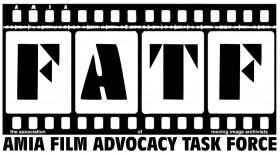Diversity, Flexibility, Opportunity
Film is undeniably in transition, but the medium-to long-term scenario could be one of greater diversity of supply, smaller scale production, and the potential for new, flexible manufacturing processes, ironically facilitated by the same level of technological innovation that has been applied in the digital video arena. Equally, new product funding models may emerge that overcome the increasingly apparent limitations of the privately financed and controlled corporate business model. These concepts are in tune with significant changes in consumer culture that have taken place in recent years, with increasing fragmentation in many markets and, consequently, more targeted product design, manufacturing, and marketing.
As the cultural position of motion picture film changes, new opportunities for development present themselves. The recent emergence of the ‘Maker Movement’1 is significant, and far from denigrating traditional technologies and crafts, it embraces them and allows for the development of new forms via cross-fertilisation. It champions small-scale, localised manufacturing that is more flexible and responsive than the traditional “smokestack” model. Such contemporary, creative new approaches to manufacturing hold out the prospect of on-demand and made-to-order models of film manufacture and supply.
Maker culture is also capable of providing new models and forms of film-related equipment, and 3D scanning developments could well benefit parts manufacture. In addition, the Maker Movement re-establishes the place of crafts in society2, highlighting their importance in a world which has increasingly turned away from the physical and the tangible in favour of the disconnected, abstract experience mediated by digital technologies.
Many who work with film speak to the satisfaction gained from working with one’s hands and to the appreciation of the craft practices associated with film handling. For far too long, this critical aspect has been overlooked, with the discourse tending to focus on film as art.
A transition path away from an industrial-based model of film manufacture is also aligned with emerging concepts of the Cinematic Common3 – a subset of the theory of The Commons, which encompasses the natural and cultural resources of the world that are held in the common ownership of humanity4.
Consideration of The Commons is a key part of the discourse on cultural heritage and cultural diversity, and compensates for the effects of what is further referred to as The Tyranny of Small Decisions – a phenomenon whereby many small decisions made by purchasers of goods and services can lead, cumulatively, to undesirable outcomes contrary to the common good5.
Within this new paradigm, development of a Cinematic Common addresses the ultimate limitations of markets themselves in the provision of film-related goods and services. Such thinking allows for public funding of film technology, either through centralised grant schemes or tax breaks (already disbursed in many countries for film productions), or more locally through crowdfunding mechanisms.
While no one can predict the future, one can continue to advocate for artistic rights and freedoms, for choice and diversity, and for new ways of looking at challenging situations.
1. Bajarin, Tim, Maker Faire: Why the Maker Movement Is Important to America’s Future, TIME, May 19th, 2014
2. Crawford, Matthew B, The Case for Working With Your Hands, The New York Times, May 21, 2009
3. Stoddard, Matthew, Film Heritage and the Cinematic Common in Angelaki: Journal of the Theoretical Humanities, Volume 18, Issue 4, 2013, pp 179-194
4. http://ccmj.org/wp/associates-papers/the-commons-a-formal-definition
5. Kahn, Alfred E, The Tyranny of Small Decisions: Market Failures, Imperfections, and the Limits of Economics in Kyklos – International Review for Social Sciences, Volume 19, Issue 1, February 1966, pp 23-47
Image: Maker Faire 2009
by Jon ‘ShakataGaNai’ Davis
is licensed under the Creative Commons Attribution-Share Alike 3.0 Unported license

